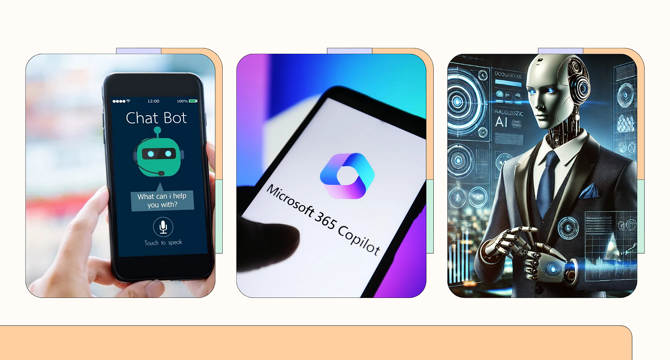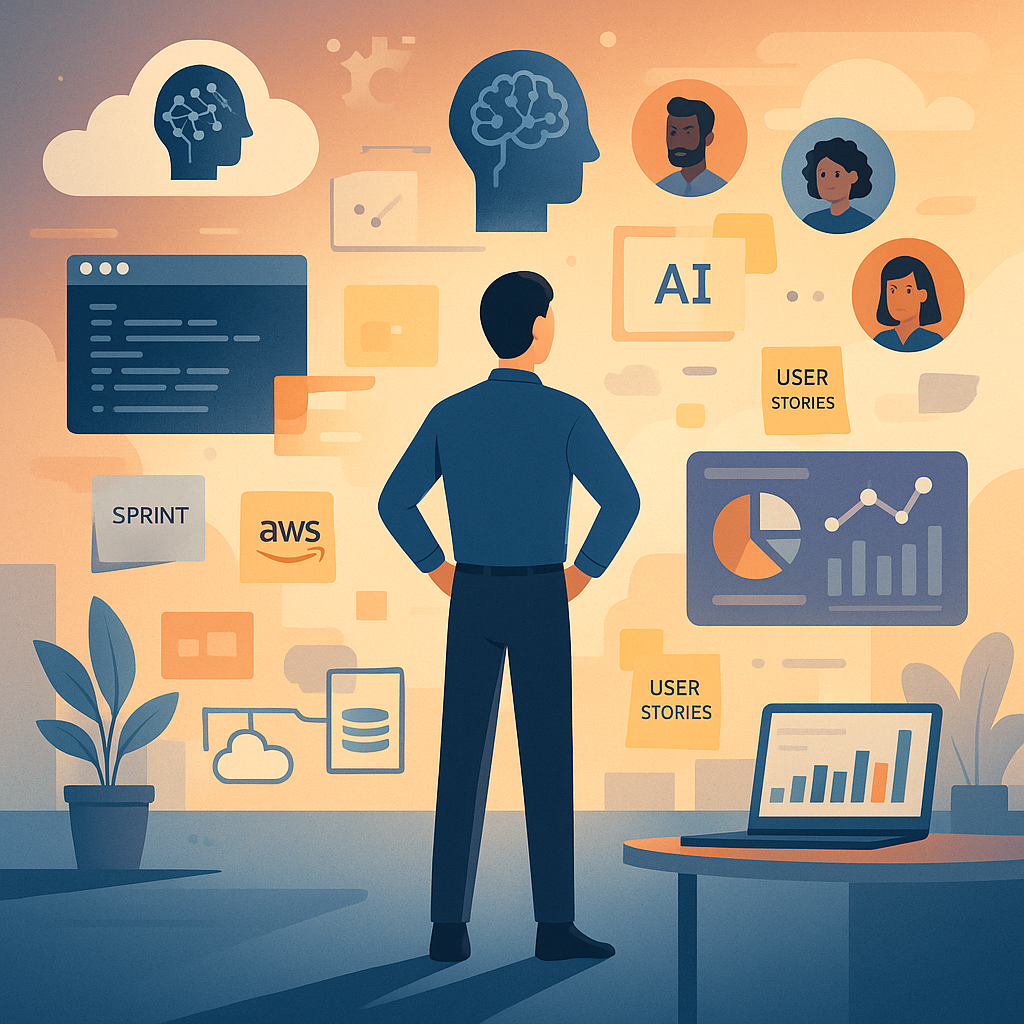Product Management News
Medium
37

Building with AI Feels Like Magic — Until You Hit Reality
- Building with AI requires skills and training, not just plug-and-play solutions.
- Working with AI involves orchestrating various components and designing systems rather than just writing code.
- Successful AI applications focus on context, adaptability, and scalability rather than quick fixes.
- Despite challenges like token limits, AI builders are encouraged to persevere for the ultimate magic of creating something transformative.
Read Full Article
2 Likes
Medium
365

Image Credit: Medium
The Feature That Almost Sank Us — And the Stakeholder Who Taught Me the Most
- A stakeholder demanded a new feature urgently, despite it not being planned or aligning with user research.
- Instead of simply complying, the Product Owner chose to ask key questions to understand the core problem and purpose of the feature.
- Through collaboration with the stakeholder, a smaller, more meaningful version of the feature was scoped, emphasizing user needs and success metrics.
- The experience taught the Product Owner the importance of asking better questions, leading under pressure, and prioritizing understanding over urgency.
Read Full Article
22 Likes
Medium
54

Image Credit: Medium
The Evolution of Product Management
- Product management has evolved through history, adapting to changing landscapes and user expectations.
- From the creation of the 'Brand Man' in the 1930s to the modern strategic, customer-centric leader.
- The role has shifted from storyteller to ecosystem orchestrator, requiring deep technological understanding.
- Future PMs will focus on intelligent, interconnected systems and long-term value creation.
Read Full Article
3 Likes
Medium
197

Image Credit: Medium
SEO in Copywriting: A Beginner's First Product Description
- Search intent is crucial in copywriting, guiding the writer to address questions like what, where, and how, culminating in a call to action.
- Layered language in copywriting progresses from evoking feelings to highlighting features and back to emotions, enhancing the impact of sentences.
- Emotional triggers play a significant role in influencing consumer decisions, as they seek to fulfill needs like relief, hope, confidence, security, and more, going beyond mere product features.
- Understanding SEO and psychological triggers is vital in crafting effective product descriptions by identifying emotional pain points, selecting core emotions, and incorporating them into the writing.
Read Full Article
11 Likes
Discover more
- Programming News
- Software News
- Web Design
- Devops News
- Open Source News
- Databases
- Cloud News
- Operating Systems News
- Agile Methodology News
- Computer Engineering
- Startup News
- Cryptocurrency News
- Technology News
- Blockchain News
- Data Science News
- AR News
- Apple News
- Cyber Security News
- Leadership News
- Gaming News
- Automobiles News
Medium
101

The In-Between: The Do Or Die Phase
- The 'in-between' phase, often unnoticed, is where people face tiredness, feeling lost, and the temptation to give up.
- This phase is characterized by a clash between the conscious desire for change and the subconscious need for safety, as the subconscious mind largely controls our behavior.
- Instead of viewing the in-between as failure, it's essential to understand it as a phase where personal growth and change occur.
- Embracing consistency and using the in-between time for self-improvement is crucial for reprogramming the brain and achieving long-term success.
Read Full Article
6 Likes
Medium
269

$213 per day on Flipping Fashion on Vinted: the resale app minting micro-entrepreneurs
- Sellers on Vinted thrive due to zero fees for listing, allowing them to keep 100% of the sale price while buyers pay postage.
- The platform's algorithm incentivizes activity such as re-listing items or adjusting prices, boosting sellers up in search results.
- Resale growth on Vinted surpasses new apparel sales by over 20% yearly, with consumers preferring the convenience of 'Buy now' over traditional thrift-store shopping.
- A 7-step blueprint guides sellers on Vinted, emphasizing niche wardrobes, quality photos, SEO descriptions, strategic pricing, timing, bundling for upselling, and protecting profits.
Read Full Article
16 Likes
Medium
383

Image Credit: Medium
Seeing Through Their Eyes : A 3-Step Guide to Prioritizing Features
- Focusing on casual customers who visit a local café occasionally is crucial to increase their loyalty through an app.
- The key is to simplify the user experience to avoid making it feel like a chore or something to remember.
- Adopting a Design Thinking approach can help in prioritizing features by considering simplicity and reducing friction.
- Empathizing with users and aligning ideas with the product's core principle leads to clearer feature prioritization.
Read Full Article
23 Likes
Medium
404

Image Credit: Medium
Most AI Product Leaders Fail in the Boardroom — Because They Ignore This One Brutal Truth
- AI product leaders often struggle in boardroom meetings when they fail to demonstrate the clear and direct impact of their products using ROI-based metrics.
- Product leaders in the AI age face challenges in proving the effectiveness of their products, as highlighted by examples of successful AI implementations at companies like Amazon, Stitch Fix, and Hermès.
- The high stakes in AI transformation mean that failing to showcase the impact of AI products can render them useless and potentially harm one's career.
- Ensuring the ability to effectively communicate the value and impact of AI products is crucial for product leaders to succeed in demonstrating their worth in the boardroom.
Read Full Article
24 Likes
Medium
198

Image Credit: Medium
AI Agents vs. Chatbots vs. Copilots: What’s the Actual Difference?
- Understanding the differences between AI Agents, Chatbots, and Copilots is crucial for businesses.
- Chatbots are reactive, Copilots assist during tasks, and Agents work independently towards goals.
- Choosing the right type of AI based on involvement level and task complexity is essential.
Read Full Article
11 Likes
Medium
71

Image Credit: Medium
From 0 to 1 with GenAI: The Messy Reality of Product Management
- Product management team embraces continuous learning and improvement process without complaints.
- Utilizing GenAI for focus on building and why, while tool aids in figuring out how.
- GenAI requires clear instructions and context; humans still essential for architecture and user alignment.
- Detailed process involved beyond features, including testing, monitoring, and ongoing product strengthening.
Read Full Article
4 Likes
Medium
42

Image Credit: Medium
AI Doesn’t Repeat Itself — So How Do We Trust It?
- Traditional software is deterministic and repeatable, inspiring confidence through testing and certification.
- Modern AI, like large language models, operates based on probabilities from vast datasets, leading to varying outputs for similar inputs.
- Trustworthy AI requires a shift in engineering mindset towards focusing on behavior over exact results, incorporating monitoring and human oversight.
- While AI differs from traditional software engineering, embracing its adaptability and evolving trust, testing, and responsibility approaches can unlock unprecedented capabilities.
Read Full Article
2 Likes
Scrum-Master-Toolbox
384

Bernard Agrest: Millions of Users, Multiple Stakeholders—The Art of Product Owner Navigation
- The article discusses the traits of a great Product Owner who effectively manages stakeholders and communicates their needs to the development team.
- It also highlights the negative impact of a Product Owner who hoards tasks in the backlog under the guise of collaboration, hindering value delivery.
- A self-reflection question is posed regarding the Product Owner's prioritization decisions and their collaboration approach.
- The article promotes a coaching e-course for Product Owners and recommends using Cost of Delay for prioritization.
Read Full Article
23 Likes
Medium
177

Image Credit: Medium
Leveling Up the Conversation: Building Games, Not Just Breaking Them Down
- Lucas, with experience in game development, shares insights on building successful games rather than just criticizing them.
- The blog focuses on the practical aspects of game creation, highlighting the challenges and strategies involved in turning a vision into a successful product.
- Lucas aims to offer valuable insights and lessons learned from his own experiences to help developers and players appreciate the effort behind creating games.
- The blog emphasizes the complexities of game development, trade-offs, and the dedication required to build engaging experiences for players.
Read Full Article
10 Likes
Medium
101

Image Credit: Medium
From Engineer to Business Leader: The Mindset Shift That Changed Everything
- Transitioning from an engineering role to a business leadership position required a significant mindset shift.
- In business, decisions are not as clear-cut as in engineering, requiring an acceptance of ambiguity and trade-offs.
- The focus shifted from systems interaction in engineering to understanding how people interact in a business environment.
- Success in business is about creating measurable impact and understanding the 'why' behind tasks, with a need to reframe engineering logic.
Read Full Article
6 Likes
Medium
8

Image Credit: Medium
The Product Manager’s Most Beautiful Equation
- Great products evolve and compound value over time, similar to the constant 'e'.
- In product management, considering user emotions alongside data is essential for true innovation.
- The constant 'π' represents the unchanging vision that guides a product's journey despite feature changes.
- The essence of great product management lies in solving problems to make a substantial impact rather than just adding features.
Read Full Article
Like
For uninterrupted reading, download the app